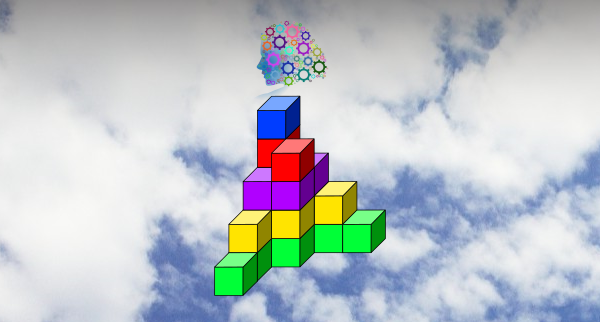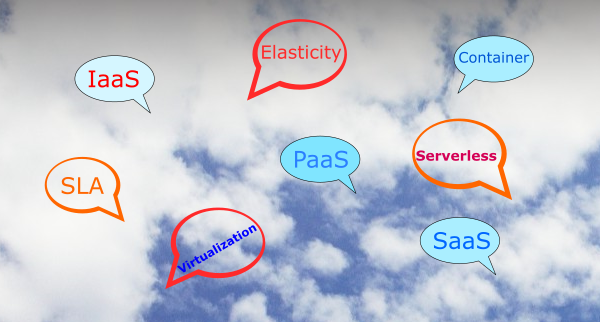A Journey of Revolutionizing Connectivity Through Radio Technologies
Foreword
This article is intended for the general public. It aims to enhance their understanding of the transformative radio technology, which has significantly impacted our world. Presented without technical jargon, it seeks to make the topic accessible to all readers.
Introduction
The discovery of radio is a fascinating tale that spans several decades and involves the contributions of multiple inventors and scientists. The story begins in the late 19th century when researchers were exploring the phenomenon of electromagnetic waves.
One of the key figures in the discovery of radio was James Clerk Maxwell, a Scottish physicist. In the 1860s, Maxwell developed a set of equations that described the behavior of electric and magnetic fields (called Maxwell’s Equations), predicting the existence of electromagnetic waves. These equations laid the theoretical groundwork for the later development of radio technology.
In the 1880s, Heinrich Hertz, a German physicist (noting that Hertz or Hz for short is used to designate ‘cycles per second’ in his honour), conducted experiments to verify Maxwell’s theory. Hertz successfully generated and detected electromagnetic waves in the laboratory, demonstrating that they behaved as Maxwell had predicted.
Building on Hertz’s work, other inventors and scientists began to experiment with wireless communication. In 1895, Guglielmo Marconi, an Italian inventor, achieved the first successful transmission of radio waves over a distance of about 1.5 miles or just under 2.5 kms. Marconi continued to refine his technology, eventually achieving longer and more reliable transmissions over greater distances.
Marconi’s experiments attracted widespread attention, and in 1901, he famously sent a radio signal across the Atlantic Ocean, from England, UK to Newfoundland, Canada. This ground-breaking achievement marked the beginning of long-distance wireless communication and firmly established radio as a practical technology.
Short History of Electromagnetism in Context
Radio represents the duality of electricity and magnetism, also known as electromagnetism. Let’s explore the humble history of this fascinating technology, which, despite its disparate elements, has revolutionized our world. To provide context, let’s examine some historical notes.
- Ancient Observations: Early observations of static electricity and the properties of materials like amber.
- 18th Century: Benjamin Franklin’s experiments with static electricity and his concept of positive and negative electrical charges.
- Early 19th Century: Alessandro Volta’s invention of the electric battery in 1800 provided a reliable source of electrical energy.
- Early 19th Century: Hans Christian Ørsted’s discovery of electromagnetism when he observed that an electric current could deflect a compass needle.
- Mid-19th Century: Michael Faraday’s experiments with electromagnetic induction demonstrated the relationship between electricity and magnetism.
- 1860s: James Clerk Maxwell formulates his equations of electromagnetism, describing how electric and magnetic fields interact and propagate through space.
- Late 19th Century: Thomas Edison’s industrial application of electricity for lighting, including the development of the practical incandescent light bulb and the establishment of electrical power systems.
- Late 19th Century: Heinrich Hertz’s experiments verify Maxwell’s theory by successfully generating and detecting electromagnetic waves in the laboratory.
- Late 19th Century: Guglielmo Marconi’s experiments lead to the first successful transmission of radio waves and the development of wireless communication technology.
Among the listed items above, the milestones of wireless or radio communication include:
- #6 Maxwell’s equations of electromagnetism;
- #8 Hertz’s experiments verifying Maxwell’s theory; and
- #9 Marconi’s experiments of the first successful transmissions over long distances.
These milestones represent a progression of understanding and experimentation that ultimately led to the development of electromagnetism as a unified field of study and the practical application of electromagnetic waves in technologies like radio communication.
Over the following decades, radio technology continued to advance rapidly. Improvements in transmitters, receivers, and antenna design made radio communication more efficient and reliable. Radio became an essential tool for communication, broadcasting, and navigation, transforming the way people communicated and experienced the world.
As a sidenote, when it comes to antennas, they are often concealed or integrated into the device’s cover, serving as an antenna. This integration is so seamless that the antenna of your smartphone or other radio gadgets is not physically visible.
Radio surrounds us in our daily lives. Here are some notable technologies that exemplify its presence and importance:
1. Broadcast Communications:
◾Broadcast communications involve the transmission of audio, video, and data signals to a wide audience over large geographic areas.
◾They utilize various frequency bands for transmission, including:
- Long Wave (LW): Historically used for broadcasting, but now mostly defunct for mainstream purposes due to limited bandwidth and technical constraints.
- Medium Wave (MW): Used for regional and local radio broadcasting, especially in areas where FM coverage is limited. Examples include talk radio stations and regional news broadcasts.
- FM (Frequency Modulation): Used for national and local radio stations, providing high-fidelity audio transmission. FM radio is widely used for music, news, and entertainment broadcasting.
- Shortwave (SW): Used for long-distance and international radio broadcasting, reaching listeners across continents. Shortwave broadcasts are often used for international news, cultural programs, and foreign language services.
- Microwaves: Utilized for satellite broadcasting of television and data signals. Satellite TV providers use microwave frequencies to transmit television channels to satellite dishes installed at subscribers’ homes. Additionally, microwave links are used in terrestrial broadcasting for point-to-point communication between broadcasting stations and relay points.
◾These broadcast communication technologies play a crucial role in delivering information, entertainment, and cultural content to audiences worldwide. They utilize different frequency bands and transmission methods to reach diverse audiences across various geographic regions. Undoubtedly, the proliferation of digital media will impact these technologies. To gauge this impact, consider the last time you listened to your local FM or international shortwave radio.
2. Mobile Communication (e.g., GSM, CDMA, LTE, 5G):
- Mobile communication encompasses various cellular technologies used for voice and data transmission over mobile networks.
- Global System for Mobile Communications (GSM), Code Division Multiple Access (CDMA), Long-Term Evolution (LTE), and 5G are examples of cellular standards.
- These technologies enable wireless communication between mobile devices (e.g., smartphones, tablets) and cellular base stations, allowing users to make calls, send messages, and access the internet while on the go.
3. Wi-Fi (Wireless Fidelity):
- Wi-Fi is a wireless networking technology that allows devices to connect to the internet and communicate with each other over a local area network (LAN).
- It operates on the IEEE 802.11 standard and provides high-speed internet access within a specific coverage area.
- Wi-Fi is widely used in homes, offices, public spaces, and commercial establishments for internet access and local network connectivity.
4. Bluetooth:
- Bluetooth is a wireless technology standard used for short-range communication between devices.
- It enables devices such as smartphones, laptops, headphones, speakers, and smartwatches to connect and exchange data wirelessly.
- Common applications include wireless audio streaming, file sharing, peripheral device connectivity including wireless earphones.
5. RFID (Radio Frequency Identification):
- RFID is a technology that uses radio waves to identify and track objects equipped with RFID tags or labels. It is used in various applications, including:
- Inventory Management: RFID tags are used to track and manage inventory in retail stores, warehouses, and supply chain operations.
- Asset Tracking: RFID is employed to monitor and locate assets such as equipment, vehicles, and containers in industries like manufacturing, logistics, and healthcare.
- Access Control: RFID cards or tags are utilized for secure access control systems in buildings, parking lots, and restricted areas.
- Electronic Toll Collection: RFID tags are installed in vehicles for automated toll collection at toll booths and roadways.
- Shoplifting Prevention: RFID tags are embedded in merchandise to deter and control shoplifting in retail stores. When tagged items pass through RFID-enabled checkpoints at store exits, alarms may be triggered if the tags have not been deactivated or removed.
6. NFC (Near Field Communication):
- NFC is a short-range wireless communication technology that enables data exchange between compatible devices when brought into close proximity (typically within a few centimetres).
- It is commonly used for contactless payment systems (e.g., mobile wallets), electronic ticketing, and data transfer between smartphones, tablets, and other NFC-enabled devices.
- These radio technologies play crucial roles in various aspects of modern communication, networking, and automation systems, facilitating connectivity, tracking, and control across different domains and industries.
7. Remote Radio Controls (e.g., household gadgets, garage door openers, car key fobs):
- Remote radio controls utilize radio frequency (RF) signals to wirelessly operate devices or systems from a distance.
- Examples include garage door openers, car key fobs, remote-controlled toys, TV remotes, and home automation systems.
- These devices typically consist of a transmitter (e.g., remote control) that sends RF signals to a receiver (e.g., garage door opener, TV), triggering a specific action or command.
Conclusion
Among the seven radio technology areas mentioned above, which do you consider the most impactful in the developing world? Share your perspective by commenting below.
As the answer is subjective, I won’t consider mine as a spoiler. In my perspective (with a bit of professional bias), #2 Mobile Communication is the most impactful in the developing world. It bridges the barrier between communities, connecting even the most remote areas to the rest of the world. A single mobile radio tower can link communities in a small town or even a rural area to global networks. Here we’re discussing two-way interpersonal interactive communications with a remarkable distinction! This feat is often underappreciated.
With just a few strategically located mobile radio towers on elevated areas and hills, a big city or a wider rural area can be connected to the world. Contrast this with the days of erecting telephone poles and laying copper wires, infrastructure that was susceptible to outages caused by flooding or vandalism. Such infrastructure is also economically unfeasible and hence unthinkable in rural areas with small total populations. Mobile radio is truly a liberator, and its significance cannot be overstated.
















0 Comments